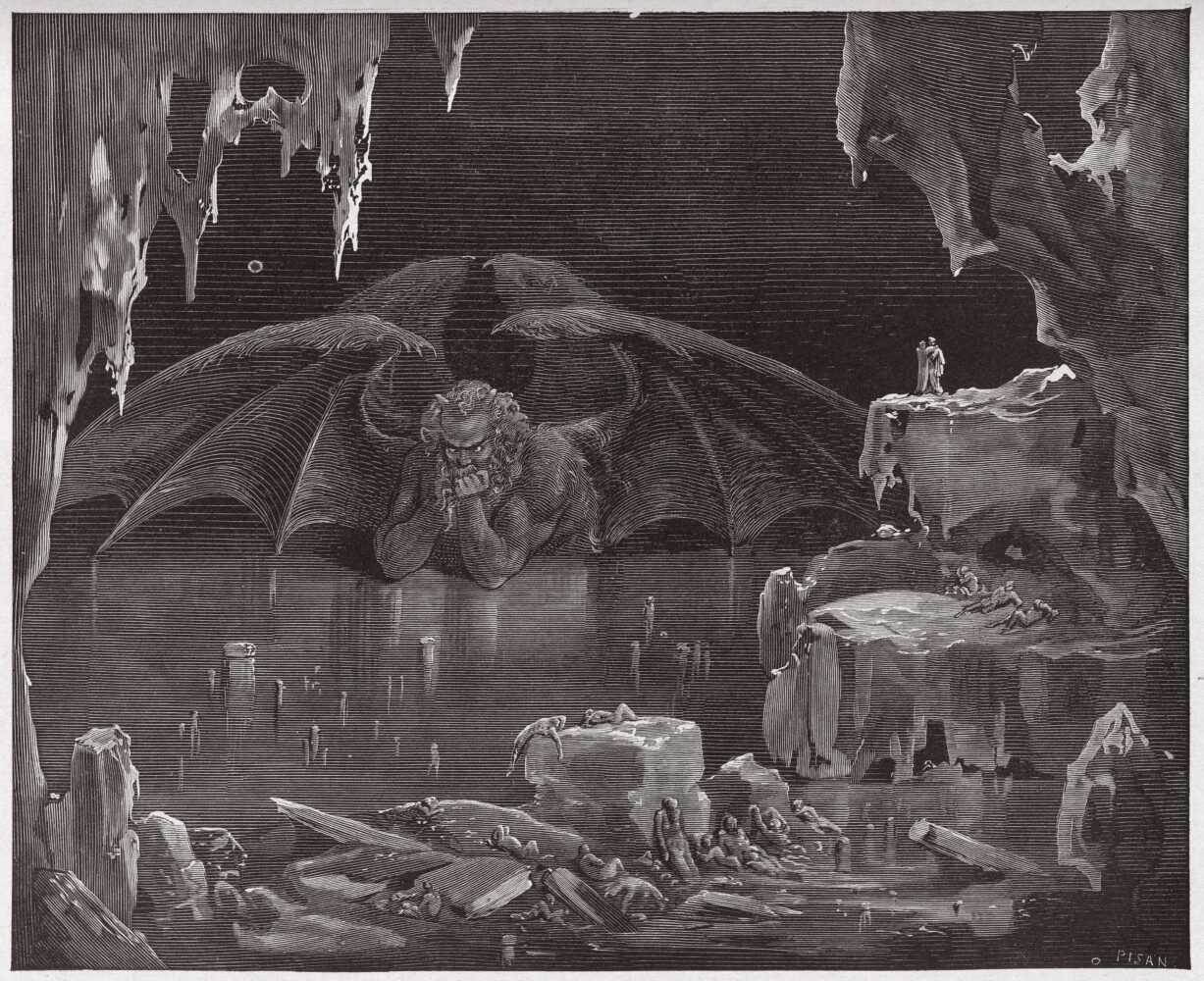

The Screwtape Letters were initially published as a series of letters in a church newspaper called The Guardian. The idea came to Lewis during an uninspiring sermon at Lewis’s local parish church, Holy Trinity Headington Quarry, in July 1940. Provisionally titled ‘As one Devil to Another’, the book comprised a series of letters addressed to a novice devil, called Wormwood, beginning work on tempting his first patient, by an older, retired devil, called Screwtape. The Screwtape Letters appeared in book form in 1942, dedicated to his friend and colleague in the English Faculty, J.R.R. Tolkien, and quickly became a bestseller.
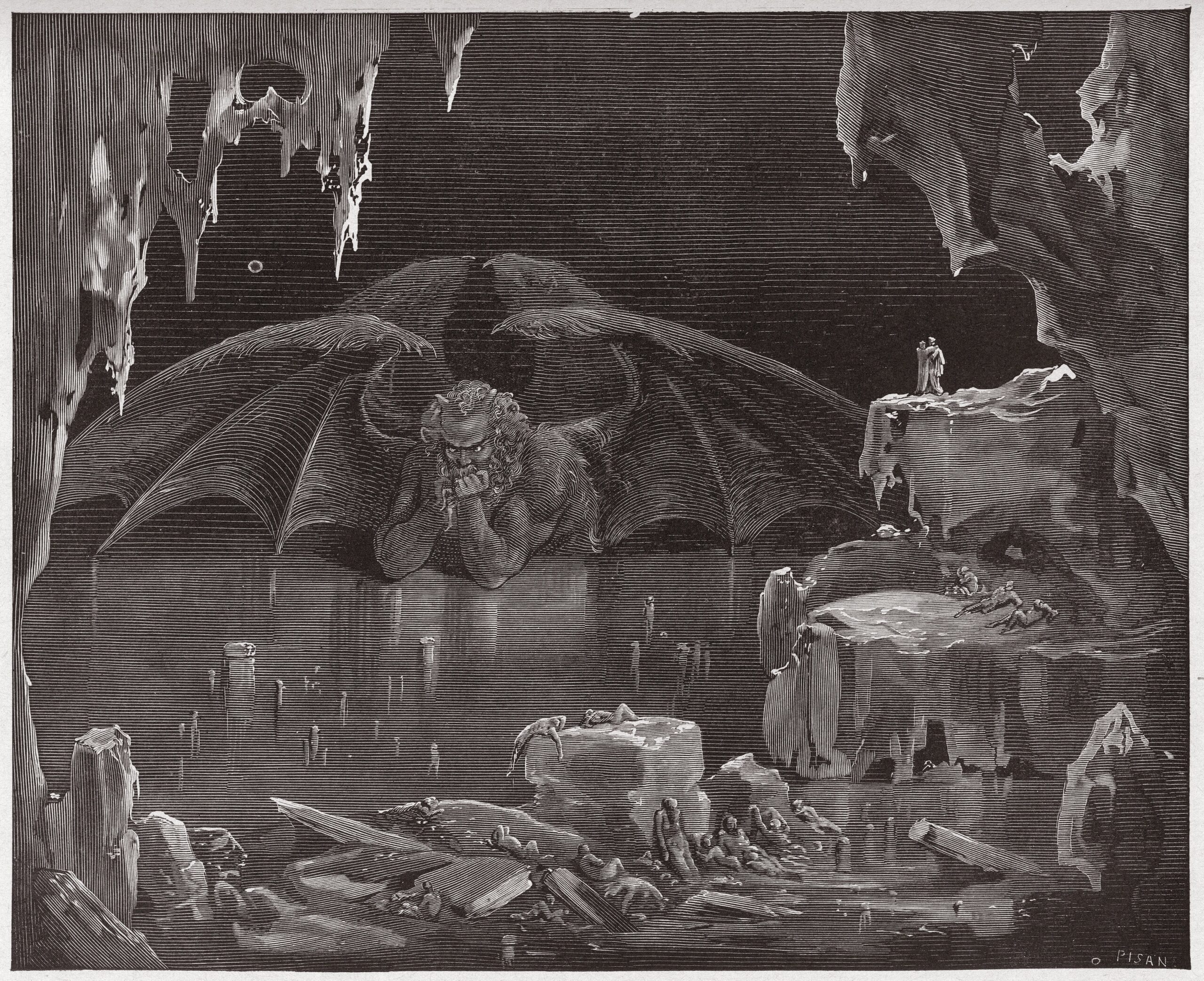
Paul Gustave Doré, illustration to Inferno, Canto 34, lines 20-21, first published by Hachette, 1861
Lewis considered Dante’s representation of devils in The Divine Comedy, with their ‘rage, spite and obscenity’, to be the most realistic literary representations.
© Stefano Bianchetti / Bridgeman Images
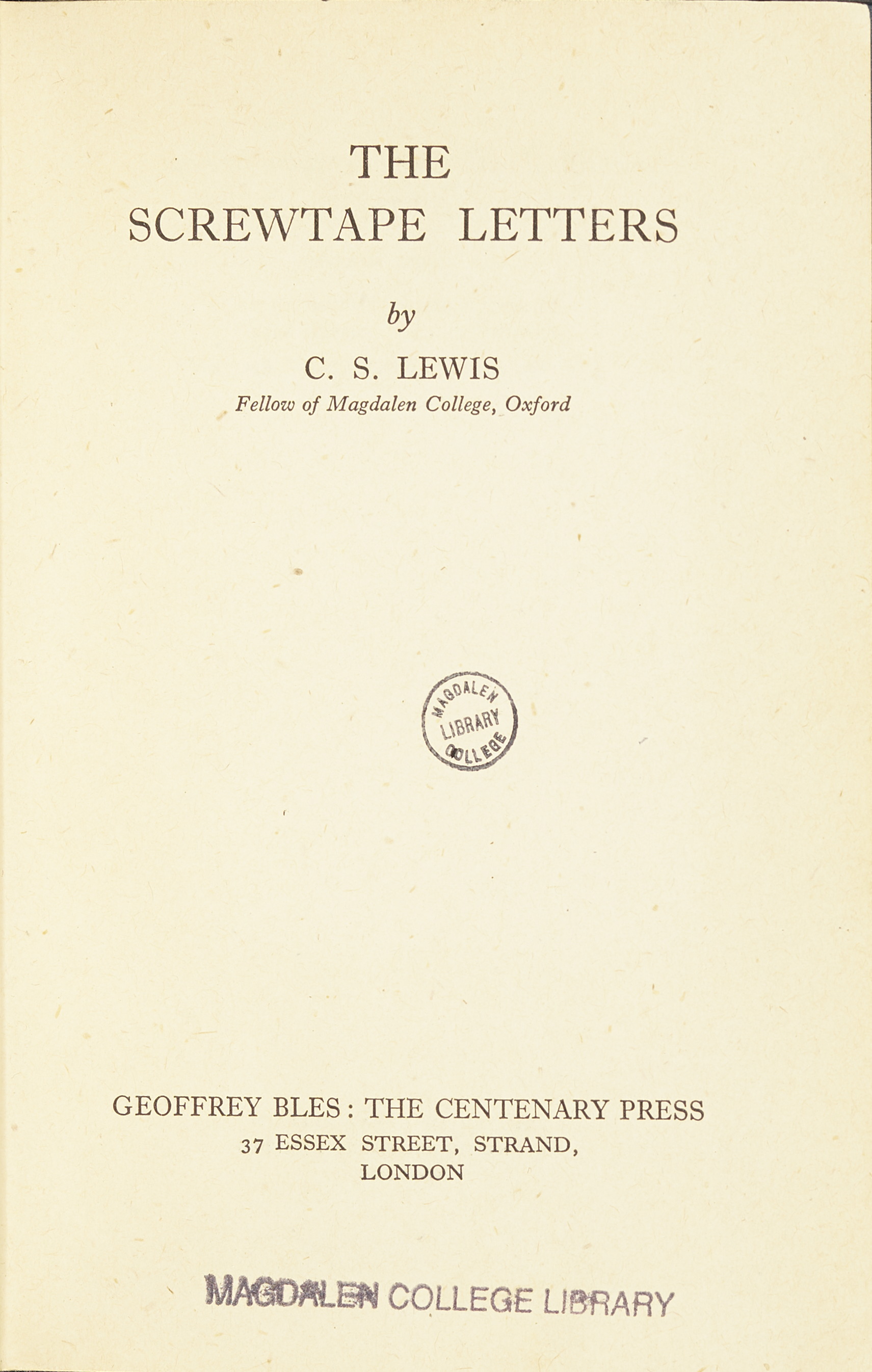
First edition of The Screwtape Letters (Geoffrey Bles, 1942)
Initially published as a series of letters in The Guardian, an Anglican periodical,
The Screwtape Letters appeared in book form in 1942. This was the book that launched Lewis’s career as a popular theologian and apologist for the Christian faith.
Magdalen College Library, Magd. LEWI-C (SCR) 1942
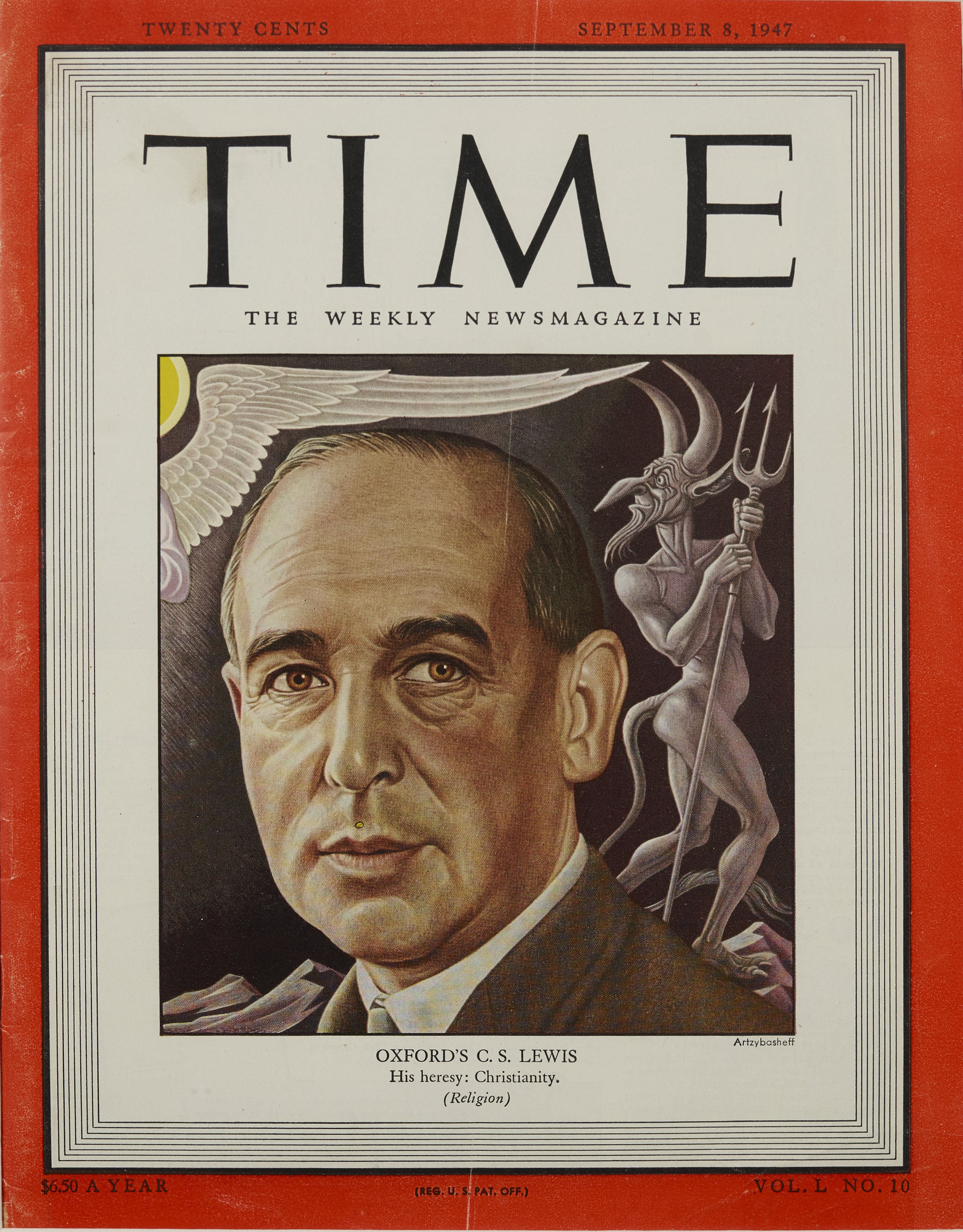
C.S. Lewis on the cover of Time Magazine
The success of The Screwtape Letters brought Lewis to the attention of American readers. His popularity led to Lewis appearing on the front cover of Time Magazine, with an interview entitled ‘Don vs. Devil’.
Permission to reproduce given by Dr Michael Ward
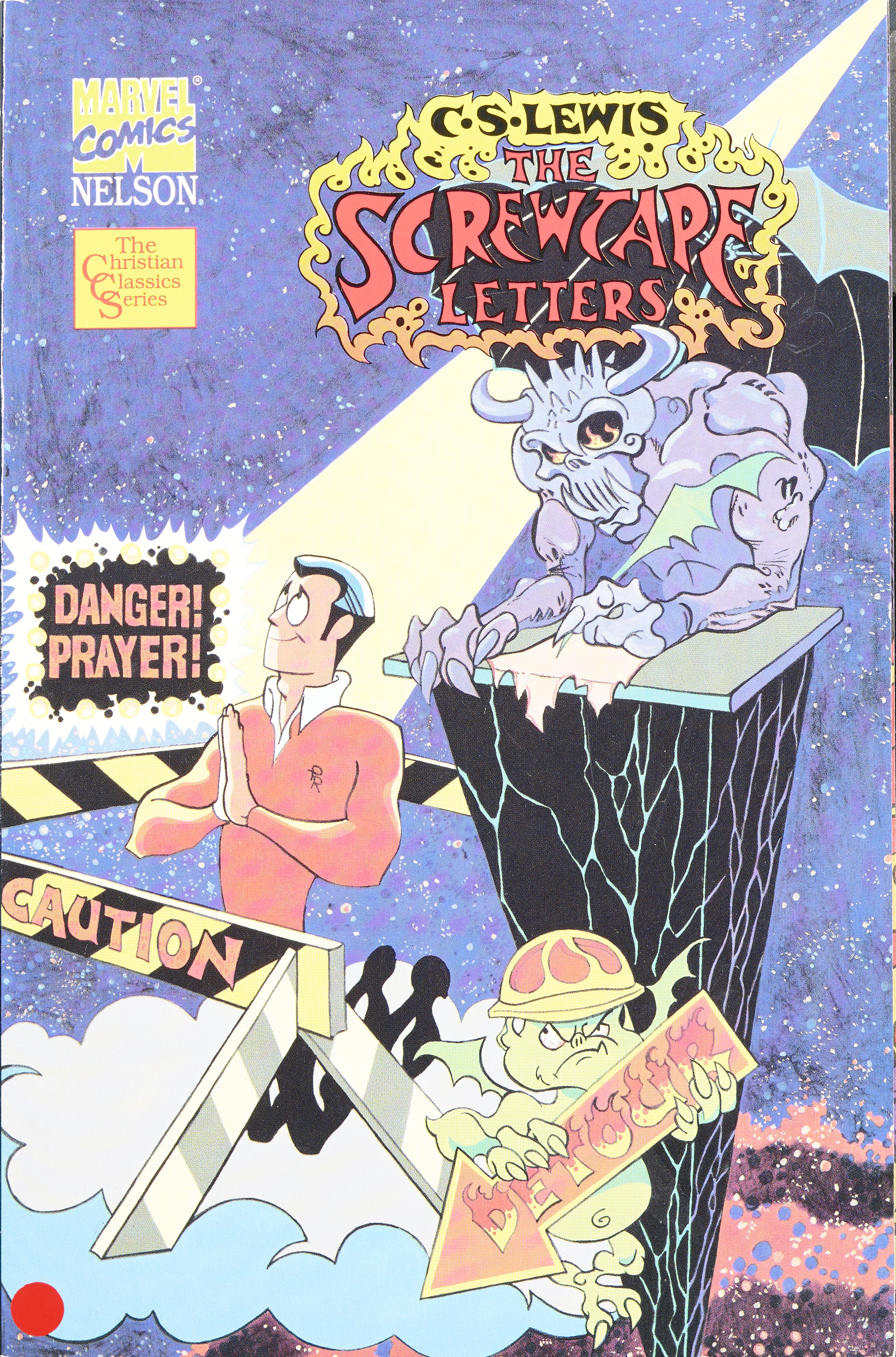
The Screwtape Letters published as a Marvel Comic (1994)
The success of The Screwtape Letters sparked a series of spin-offs, including Screwtape emails, audio and stage performances. This Marvel Comics adaptation was illustrated by Pat Redding and John Kalisz.
Magdalen College Library
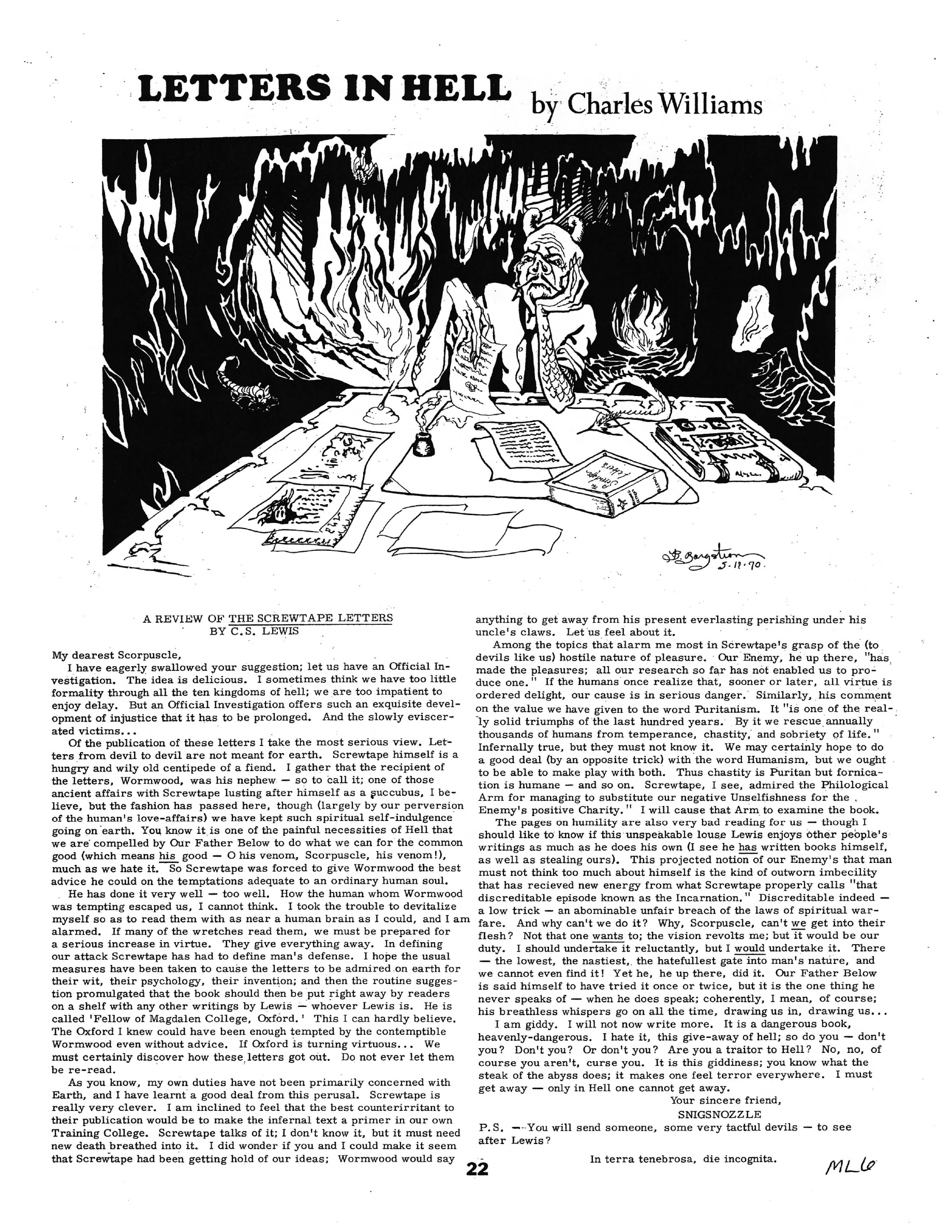
Charles William’s review of The Screwtape Letters (1970)
Charles Williams, who joined the Inklings during the Second World War, wrote a review in the form of a letter from one devil to another, expressing concern as to how the correspondence was leaked and ending with a reminder to send a colleague to deal with Lewis.
Mythlore: A Journal of J.R.R. Tolkien, C.S. Lewis, Charles Williams, and Mythopoeic Literature, Vol. 2: No. 2, Article 6